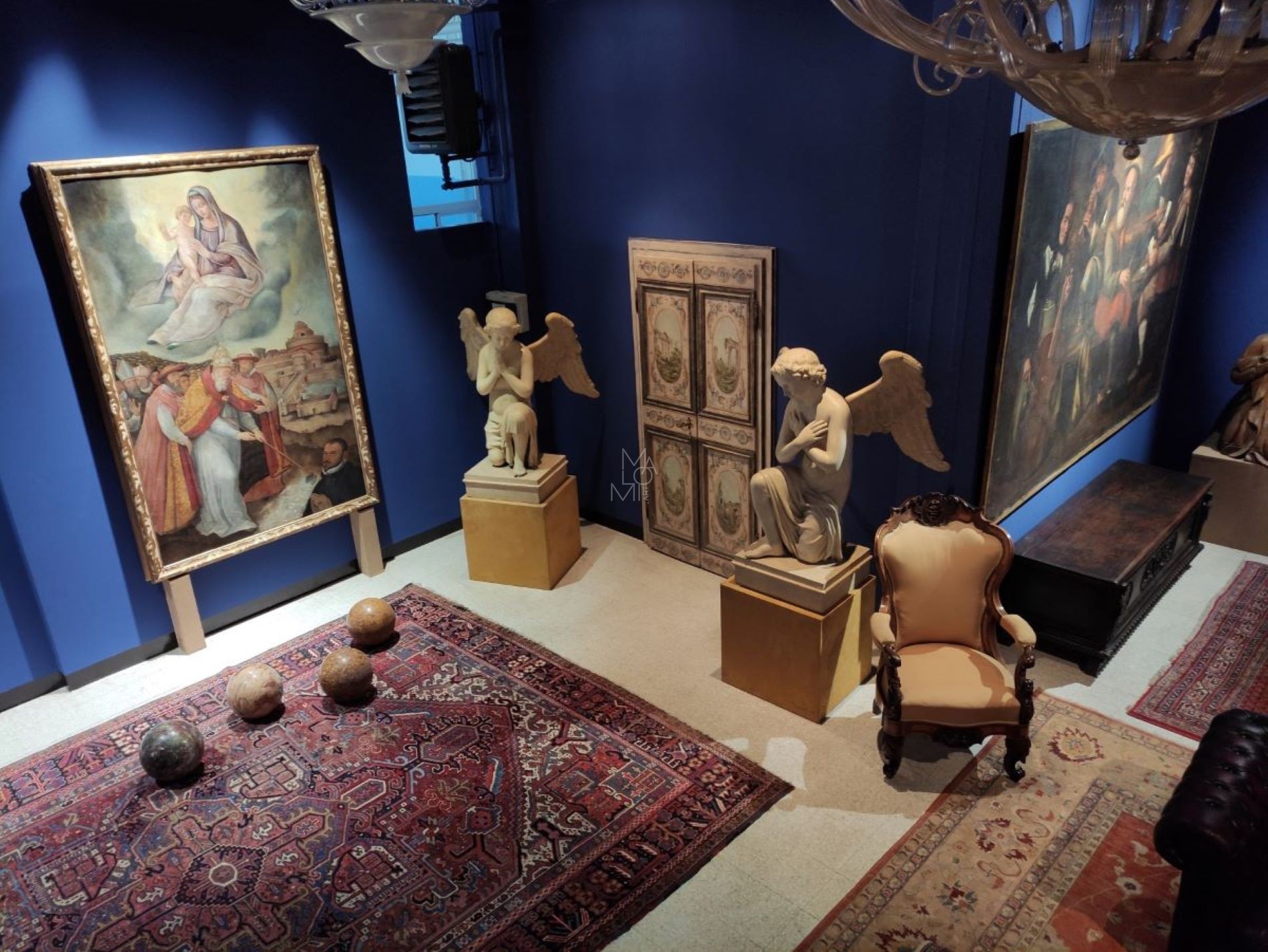Bronze sculpture depicting "Sappho" signed by Gustave Moreau
Signed bronze sculpture depicting 'Sappho'. Signed Gustave Moreau
The sculpture examined here depicts 'Sappho', the famous poetess, who was originally from Lesvos, an island in the Aegean facing the Troad. She was born between the end of the 7th and the first half of the 6th century B.C. in Eresus, but lived her life in Mytilene, the most important town on the island. She was contemporary with another poet from Lesvos, Alceus. Both poets are representatives of melic monodic lyric poetry, i.e. monodic lyric poetry sung and accompanied with the lyre. Sappho was on great terms with Alceo, who paid homage to her with a famous verse: Belt of violets, pure, rice of honey, Sappho. Like him, she too was of aristocratic origin and expressed in her lyrics harsh judgements against the parvenus, men and women not rich by birth. Sappho's criticism of them was greater than that - it is said - that Alceus directed against the tyrant of Mytilene, Pittacus, who was called by him kakopatridos, of obscure birth. To understand Sappho's harsh accents, one need only read the verses in which she celebrates caris, grace, that which makes a woman graceful. Here she reproaches a thiasos girl for having granted her favours to a particularly ungainly rival: What lout bewitches your mind? Sappho asks herself. Maidens arriving in the thasosos were educated in refinement, grace, elegance. Sappho was convinced that poetry would grant them glory and immortality. To call Sappho a monodic poetess would, however, be reductive; of her we have several choral songs, most notably the epithalami, composed on the occasion of the marriage of the Thiasos girls.
Gustave Moreau was born in Paris on 6 April 1826, the son of the architect Louis and Pauline Desmoutiers, from a wealthy bourgeois family. His parents encouraged Gustave to undertake artistic studies, and so in October 1846 he was admitted to the Ecole des Beaux-Arts at the studio of the painter Picot, an artist of the neo-classical school. Moreau's debut was not particularly brilliant: in 1849 he came 17th in the first round for the Prix de Rome. After finishing his studies, thanks to his father's connections he obtained the execution of a copy of Annibale Carracci's Virgin of Cherries (1849-1850). In 1851, the jury of the Salon accepted one work, a large Pietà, and refused him other paintings, including Darius after the Battle of Arbela, pursued by the Greeks, interrupts his escape: exhausted he drinks in a muddy puddle, which will be presented again at the Salon of 1853, after being retouched. At the 1855 Universal Exhibition, he exhibited The Athenians Abandoned to the Minotaur in the Labyrinth of Crete, commissioned by the State and destined for the Bourg-en-Bresse museum. In the same year, he sent four genre paintings to the Amis des Arts exhibition in Bordeaux. In 1857, Moreau decided to make a study trip to Italy, during which he made friends with Degas and Elie Delaunay. After his return to Paris in September 1859, he resumed his work. In 1862 he painted the Stations of the Cross for the church of Notre-Dame de Decazeville, and in 1864 he exhibited a work at the Salon that aroused general admiration and a medal: Oedipus and the Sphinx; the painting was immediately bought by Prince Napoleon. In 1866, Orpheus was bought by the Musée du Luxemburg, while Diomedes devoured by his horses was not bought by the Société des Amis des Arts in Rouen until 1869. The two works exhibited at the 1869 Salon, the Prometheus and Jupiter and Europa, did not meet with great approval. At the beginning of the eighth decade, following turbulent political events, Moreau retired from public life, but in 1874 he was invited by Philippe de Chennevières to participate in the decoration of the Pantheon; and in 1875 he was awarded the Legion of Honour. When the artist presented his new works at the 1876 edition, they again caused a sensation, in particular the Salome dancing before Herod. Encouraged by his success, he took part in the Universal Exhibition of 1878 with a large group of paintings. In 1879, Antoni Roux commissioned him to paint a series of watercolours illustrating La Fontaine's Fables. In 1888, he was elected to the Académie des Beaux-Arts and three years later became a professor at the Ecole des Beaux-Arts. In 1895, he decided to create a museum to house his works, which in his will, drawn up in 1897, would be handed over to the State. Moreau died on 18 April 1898. The Musée Gustave Moreau opened to the public in 1903.
Restorations
Dimensions in centimetres
Length
Depth
Height
